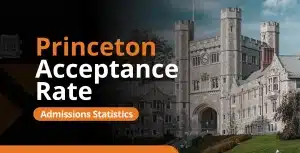How to Get Published in the Columbia Junior Science Journal
Getting into research projects can really boost your academic game. Take the Regeneron Science Talent Search, for example. Students who join this research competition often end up in top universities and become big players in their fields. It’s all about giving students a shot at research, like what the Columbia Junior Science Journal (CJSJ) does. The journal lets high schoolers publish their own research and create an impact in the academic community.
We’ll walk you through how to submit your work to the CJSJ so it meets their standards. We’ll also throw in some tips on writing a killer research paper to improve your scientific writing skills.
What Is the Columbia Junior Science Journal?
The Columbia Junior Science Journal is a research journal for high school students. If you’ve got original research or review articles, this is the place to get them published. CJSJ covers everything from natural and physical sciences to engineering and social sciences.

Since it kicked off in 2015, CJSJ has really taken off. It started as a spin-off from the Columbia Undergraduate Science Journal. As of Spring 2024, CJSJ has published nine volumes packed with top-notch research from high schoolers. The peer-reviewed process at CJSJ ensures only the best research makes it in, setting a high bar for young scientists.
Getting published in CJSJ lets you share your research with a broader audience and get recognized in the scientific community. This experience boosts your resume for college applications and future scientific careers. Plus, being published in CJSJ can lead to more research opportunities and collaborations.
Columbia Junior Science Journal Submission Guidelines
Before you send in your research to the Columbia Junior Science Journal, here are some important things you need to know:
Eligibility
- School background: You must be a current high school student, no matter where you are in the world.
- Authorship: You can submit as an individual or part of a team. If you’re part of a team, list all collaborators and mentors, but only the primary author can submit the paper.
- Submission limit: You can only submit one paper per cycle.
Research topics
CJSJ is open to a wide range of research topics. You can submit manuscripts in natural sciences, physical sciences, engineering, or social sciences.
There are two types of manuscripts you can submit: original research and review articles. Each type has specific length guidelines, so be sure to follow them closely.
Manuscript format
- Length: For original research submissions, your manuscript must be at least two pages but no more than three pages long. Review articles should be between four and five pages. Page limits include figures and citations.
- File format: Submit your research paper as a .docx file, and include all figures and captions within the paper. Additionally, send figures and captions in a separate .ppt file.
- File name: LastnameFirstname_form.pdf/paper.docx/figures.ppt (e.g., DoeJohn_form.pdf, DoeJohn_paper.docx, and DoeJohn_figures.ppt).
- File template: Make sure to follow the “Research Paper Template” for original research or the “Review Article Paper Template” for review articles.
Additional requirements
When you submit to the Columbia Junior Science Journal, there are a few extra steps you need to follow:
- Submission Form: Fill out the form under the submission portal tab. You’ll need to provide your name, email, high school, location, graduation year, and research subject. Mention how you heard about CJSJ and include a short bio about where and why you did your research, along with any other relevant info.
- Permission to Publish Form: You must read and complete this form, which needs a signature from your Principal Investigator, Mentor, or Teacher. Scan the completed form and upload it to the submission portal. If you’re submitting a review article, fill out the form but leave the sections related to PI/mentor information blank.
Submission fees
There are no submission fees for the Columbia Junior Science Journal. It’s a no-fee journal, so you won’t be charged for submitting or publishing your articles. This open-access policy makes it accessible to all high school researchers.

Peer review
CJSJ follows a rigorous double-blind peer review process. Here’s how it works:
- The editorial board first screens manuscripts for scientific rigor, alignment with the journal’s aims, and overall viability.
- Doctoral students in relevant fields review the submissions and suggest actions.
- The Editor-in-Chief then approves selected papers for publication, pending edits. You can expect feedback within a few weeks of the submission deadline.
- Accepted articles go through several rounds of suggestions by editors and updates by authors.
- Finally, a Faculty Advisory Board of distinguished professors reviews and approves the issue before publication.
Ethical considerations
When you submit to the Columbia Junior Science Journal, make sure your research paper is original and hasn’t been published anywhere else. It shouldn’t be under consideration by any other journal either.
Plagiarism is a big no-no. This includes:
- Reusing exact wording or phrases from other published works without proper citation.
- Improper use of quotation marks.
- Failing to attribute quoted texts and ideas to their original authors.
- Using tables, data visualizations, illustrations, and other elements without proper attribution.
- Reusing your own previously published words or ideas without proper attribution.
Timeline
Deadlines for the Columbia Junior Science Journal are usually in September. For the 2024-2025 volume, submissions will tentatively open in August 2024. Due to the high volume of submissions, expect to hear back about your application within 2 to 3 months.
Submission portal
Ready to submit? Head over to CJSJ’s submission portal. Make sure you have all your documents and forms ready before you start the submission process.
Tips for Getting Published in the Columbia Junior Science Journal
To increase your chances of getting published in the Columbia Junior Science Journal, follow these essential tips:
1. Pick a relevant and original topic.
Look into current trends and gaps in your field. For example, if you’re into environmental science, you might look into the impact of microplastics on local aquatic ecosystems—an area that’s getting attention but still needs more research.
Be original in your approach. Avoid common topics unless you have a fresh perspective or new data. For instance, instead of a generic study on climate change, focus on something specific and less known, like how climate change affects crop yields in your area.
2. Follow the submission guidelines to the letter.
Carefully read the guidelines on the Columbia Junior Science Journal’s website. If they say your manuscript should be three to five pages, including figures and citations, make sure your paper fits that limit.
Format your manuscript exactly as specified. Use their templates if you’re submitting original research, following all formatting rules for headings, citation styles, and figure placements. Missing a detail can get your paper rejected without review. Double-check everything, from font size to figure labels, to avoid unnecessary disqualification.

3. Do thorough research.
Start with a comprehensive literature review to understand what’s already out there and where the gaps are that your research can fill. If you’re researching renewable energy, look at recent studies on solar and wind energy efficiency to find areas that need more exploration.
Use robust data collection methods. If you’re studying the effects of a new fertilizer on plant growth, make sure to use control groups and replicate your experiments to validate your results. Detailed, methodical research strengthens your findings and adds credibility to your paper. Document everything meticulously so others can reproduce and validate your work—this transparency is key in scientific research.
4. Write a clear and concise abstract.
Briefly state the purpose of your study and why it matters. If your research is about how urban pollution affects lung health in teens, your abstract might begin with, “This study investigates the impact of urban pollution on adolescent lung health, highlighting the urgent need for better air quality control measures.”
Then, give a quick summary of your methods, key findings, and conclusions. Use precise language to hit the main points without extra fluff. For instance, “Using a sample of 200 adolescents, this study found a significant correlation between exposure to urban pollution and decreased lung function. The results suggest that stricter environmental policies are needed to protect public health.” Keep your abstract around 250 words to ensure it stays focused and impactful.
5. Use proper scientific methodology.
Clearly define your hypothesis and designing experiments that can test it accurately. If you’re looking at how different soil types affect plant growth, specify your hypothesis and make sure your experiment includes multiple soil samples, consistent watering schedules, and controlled environmental conditions.
Document every step of your methodology in detail. Include info about the equipment used, the procedure followed, and any variables controlled or manipulated. If you used a spectrophotometer to measure chlorophyll content, describe its calibration, the wavelengths measured, and how samples were prepared.
6. Present data clearly and accurately.
Use tables, graphs, and figures to show your results. If you did a survey on student stress levels, a bar graph comparing stress levels across different grades can quickly show your main findings. Make sure all figures are properly labeled with titles, legends, and units of measurement to avoid confusion.
Interpret your data accurately and objectively. Avoid exaggerating or misrepresenting your findings. If your data shows a moderate correlation between two variables, state it as such rather than implying a stronger relationship. Discuss any anomalies or unexpected results transparently, and suggest possible explanations or areas for further research.
7. Cite sources correctly.
Citing your sources correctly is super important to keep your research credible and give credit to the original authors. Use the citation style specified by the Columbia Junior Science Journal to make sure your references are clear and professional.
Make sure to cite all sources of information, data, and ideas that aren’t your own. This includes direct quotes, paraphrased info, and any data sets you used. For example, if you use a statistical model from another researcher, cite their work even if you modified the model for your study. Proper attribution prevents plagiarism and lets readers trace the origins of your data and ideas, enhancing your work’s transparency and credibility.

8. Proofread and revise thoroughly.
Read your paper aloud to catch any awkward phrasing or grammatical errors. Look for subject-verb agreement, correct use of punctuation, and consistent tense usage. These small details can significantly improve the readability and professionalism of your paper.
9. Seek feedback.
Share your draft with teachers, mentors, or fellow students who have experience in your research area. If your paper is on a biology topic, ask a biology teacher to review your methodology and findings. Their expertise can help spot any flaws or areas for improvement you might have missed.
Also, get peer reviews for diverse perspectives. Peers can offer fresh insights and may notice ambiguities or errors you missed. A peer might point out that a section of your discussion is unclear or that a figure lacks a necessary label. Constructive criticism from multiple sources can help you refine your paper, ensuring it is well-rounded and polished before submission.
10. Prepare for the peer review process.
Understand that peer review is meant to improve your work. Be open to feedback and willing to make necessary revisions. If reviewers suggest clarifying a section of your methodology, take their advice seriously and provide detailed explanations in your revised manuscript.
Familiarize yourself with common peer review comments and how to address them. Preparing for potential critiques and addressing them proactively can streamline the revision process and enhance the overall quality of your paper. Keep communication with the editorial board professional and respond promptly to any requests for additional information or revisions.
11. Keep track of the submission timeline.
Mark important dates, like submission deadlines, on your calendar. Since the deadline is in September, aim to complete your draft by July to allow ample time for revisions and feedback. This helps you avoid last-minute rushes and reduces the likelihood of errors.
Stay informed about the review process timeline. After submission, expect to hear back within 2 to 3 months. Staying organized and proactive throughout the timeline ensures a smooth submission process and improves your chances of meeting all deadlines.
For more tips on what the Columbia Junior Science Journal looks for, check out this guide they made for you.
Columbia Junior Science Journal Sample Papers
A great way to get a feel for what the Columbia Junior Science Journal looks for is to check out the articles they’ve already published. Let’s dive into a few and see what we can learn.
Paper 1: “Cryptojacking Detection: A Novel Two-Step Approach Integrating Machine Learning and DNS Monitoring” by Anishka Vissamsetty
Summary
Anishka Vissamsetty’s study tackles the rising cybersecurity threat of cryptojacking, where cybercriminals hijack victims’ computing resources to mine cryptocurrency without permission. The research introduces a two-step detection method. By using gradient-boosted decision trees, the model achieves an impressive 89% accuracy in detecting cryptojacking, making it useful in various settings, from corporate networks to personal devices.

Why the paper is good
This paper stands out because of its innovative approach and thorough methodology. The two-step process that combines machine learning with DNS monitoring is both creative and practical. The first step focuses on CPU and memory usage to spot unusual patterns that might indicate cryptojacking. This shows a robust and meticulous training process, which adds to the paper’s credibility.
The second step, which involves DNS monitoring, adds an extra layer of analysis to strengthen the detection model. This multi-faceted approach not only improves accuracy but also provides a comprehensive solution to cryptojacking. The detailed methodology, use of real-world data, and application of gradient-boosted decision trees demonstrate thorough research and practical relevance.
Moreover, the paper clearly outlines its practical applications, showing its relevance across different environments. By addressing a current issue with a well-rounded, technically sound approach, the paper exemplifies the qualities that the Columbia Junior Science Journal looks for in its published research.
Paper 2: “Decision Bias in Recognition Memory: How Memory-Selective Neurons Encode Criterion Shifts” by Cloris Shi and Evan Layher
Summary
Cloris Shi and Evan Layher’s student research looks into how memory-selective (MS) neurons in the human brain encode recognition memory under different decision biases. They aimed to understand how people adjust their recognition criteria based on situational demands, like the high stakes of eyewitness testimony in legal cases. They found that MS neurons, along with visually-selective and criterion-selective neurons, encode both criterion shifts and image categories, indicating a complex integration of memory and decision-making stimuli.
Why the paper is good
This paper shines because it explores how MS neurons adjust to decision biases, giving us a deeper understanding of cognitive flexibility. The researchers’ methodology, which involves precise recording of neuronal action potentials and sophisticated data analysis using SVM classifiers, shows rigorous scientific rigor. This highlights the technical expertise needed to decode neuronal activity accurately, showcasing the high level of skill involved in the research.
Another strength of the paper is its thorough investigation across multiple brain regions, enhancing the robustness of the findings. This broad scope ensures that the results aren’t limited to a specific brain area, adding credibility and generalizability to their conclusions. The detailed examination of neuron types and their roles in decision-making processes highlights the study’s depth.
Also, the practical implications of this research are clearly articulated, making it relevant to real-world applications. The study’s findings suggest that memory and decision-making are more interconnected than we previously thought. By linking these findings to everyday scenarios like eyewitness identification, the authors provide valuable insights into how the brain navigates complex cognitive tasks. This relevance to practical, high-stakes situations shows the study’s impact.
Conclusion
The Columbia Junior Science Journal is an amazing platform for high school researchers to show off their work and make a mark in the scientific community. By understanding what the journal expects, carefully following the submission guidelines, and learning from past published papers, you can boost your chances of getting published. Aim high, stay dedicated, and let your curiosity lead you to excellence.

FAQs
What is the acceptance rate of the Columbia Junior Science Journal?
The acceptance rate of the Columbia Junior Science Journal is around 3%. This highlights the journal’s commitment to high-quality, rigorous research.
Does the Columbia Junior Science Journal charge fees?
The Columbia Junior Science Journal does not charge any fees. It is an open-access journal, meaning authors are not charged for submission or publication.
When is the deadline for submission to the Columbia Junior Science Journal?
The deadline for submission to the Columbia Junior Science Journal is typically in September. For the latest volume, submissions will tentatively open in August 2024.
What research topics does the Columbia Junior Science Journal accept?
The Columbia Junior Science Journal accepts research topics in natural sciences, physical sciences, engineering, and social sciences. They welcome both original research and review articles.





































